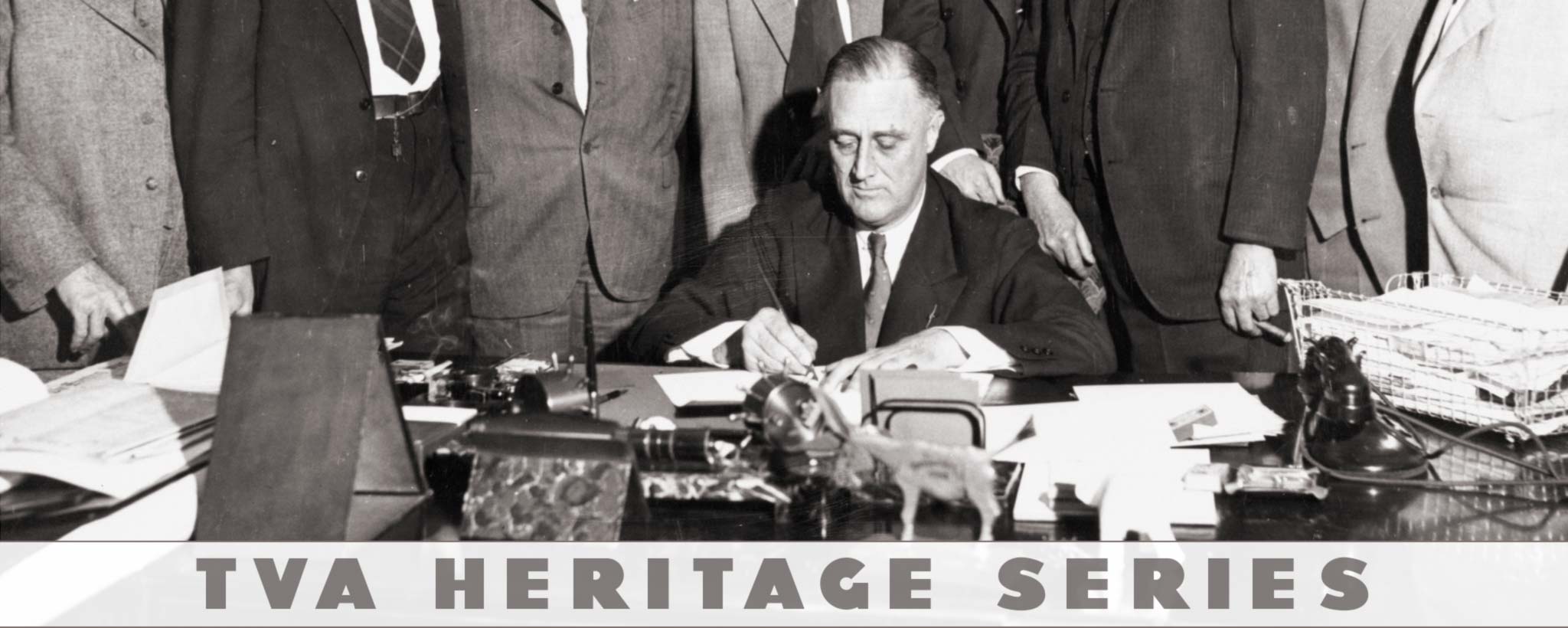
The Enduring Legacy
Politically, TVA was one of the strangest hybrids in the “alphabet soup” of New Deal agencies. But FDR’s experiment in public power has stood the test of time.
In the depths of the Depression, a newly elected president and his staff churned an unprecedented number of major bills through Congress—so many their names had to be shortened, mostly to three letters. There was the REA, the WPA, the CCC, the NRA, the CWA the AAA. Wags called it President Franklin D. Roosevelt’s “alphabet soup.”
But of all his three-letter creations, none was more unusual or enduring than the one that was abbreviated TVA.
Power Proposition
Roosevelt, who’d grown up on the banks of New York State’s Hudson River, had been interested in river power for much of his life. Soon after he was inaugurated governor of New York in 1928, he had to deal with gross price gouging by profit-centered regional power companies, which were charging New York State energy users several times more than their Canadian neighbors just across the St. Lawrence River were paying for electricity.
In 1929, Governor Roosevelt attacked the problem with a spectacular suggestion—that the state build dams and power plants on the St. Lawrence to produce electricity. The electricity would be available to private utilities, but only if they lowered their rates.
His idea caught the attention of Senator George Norris of Nebraska, who for years had been advocating a similar plan, to be put into effect at an existing federal site in Muscle Shoals, Alabama, on the Tennessee River.
During World War I, the government had begun building Wilson Dam there to provide power for the production of nitrates, which were needed to make explosives. Norris wanted to use the dam and others like it to control flooding and generate power across the entire Tennessee Valley.
As early as the summer of 1929, he praised Roosevelt’s “electricity proposition,” adding that he thought the governor would discover that an even more comprehensive governmental authority regulating the generation of electricity made sense.
FDR’s fight for public power in New York, perhaps the grandest gesture of his gubernatorial career, was ultimately a frustrating failure. The private utilities, which had many friends in the state legislature, blocked his initiative. But the battle may have steered Roosevelt toward another public-utility proposal on a much larger scale.
The Grand Tour
Throughout his 1932 campaign for the presidency, he never dared to mention anything as monumental as the idea of TVA. But it wasn’t far from his mind. In December 1932, only five weeks after clobbering President Hoover in the election, President-elect Roosevelt invited Senator Norris to accompany him to Muscle Shoals to “see what the whole Tennessee River project looks like.”
The next month Roosevelt and Norris took a train south from Washington, D.C. Together they toured Wilson Dam. Although it was chilly, they rode between destinations in an open car.
Everything at Muscle Shoals, FDR said, “was at least twice as big as I ever had any conception of it being.” The potential for power generation was obvious. Over the roar of the spillways he shouted to Norris how huge an operation it was—and how much energy was being wasted.
The two were photographed together. Roosevelt wasn’t even president yet and had made no promises or proposals concerning Norris’s pet project, but the symbolism was obvious.
“This should be a happy day for you, George,” said the president-elect.
Norris responded (reportedly with tears in his eyes), “I see my dreams come true.”
They rode down to Alabama’s capitol building in Montgomery. From the portico on which Jefferson Davis had been inaugurated president of the Confederacy, Roosevelt spoke off the cuff. He talked of how Muscle Shoals would become “part of an even greater development that will take in all that magnificent Tennessee River from the mountains of Virginia to the Ohio” for the benefit of “generations to come” and “millions yet unborn.”
Serving the Public Good
Several journalists from major newspapers were there to hear the extemporaneous speech. None of them recognized it as an announcement of anything approaching the size and scope of TVA.
Just 37 days after his inauguration, Roosevelt sent Congress a formal proposal for the establishment of the Tennessee Valley Authority. It was perhaps the most imaginative of his early alphabet agencies—more sweeping in scope than some, but strictly limited to one region.
When Norris asked him how he would explain the nature of this federal corporation, the president laughed. “I’ll tell them it’s neither fish nor fowl,” he said. “But whatever it is, it will taste awfully good to the people of the Tennessee Valley.”
The TVA Act passed that spring of 1933. And though it later faced judicial challenges, FDR stood behind it throughout his administration. Over the years he even spoke of the possibility of creating other TVAs around the nation—on the Colorado River, perhaps, or (returning to his old fight in New York) the St. Lawrence. As late as 1944, he was still hinting he might have more “valley authorities” to offer the nation.
They never came to fruition. But half a century later, TVA still stands with Social Security as one of the enduring legacies of the president who believed in public programs for the public good.